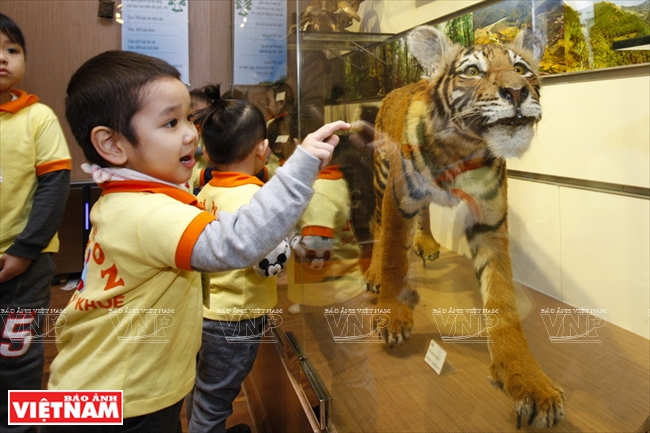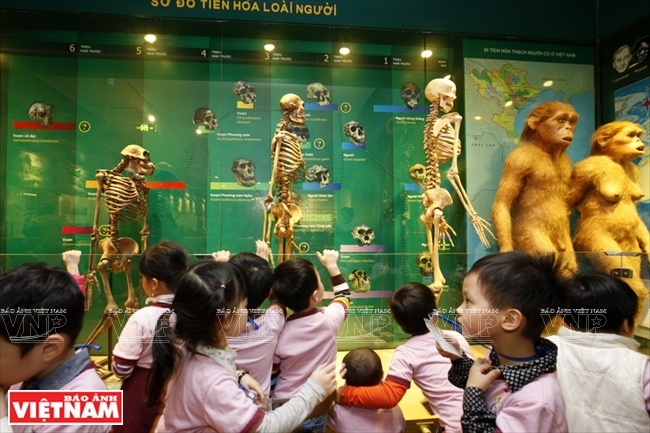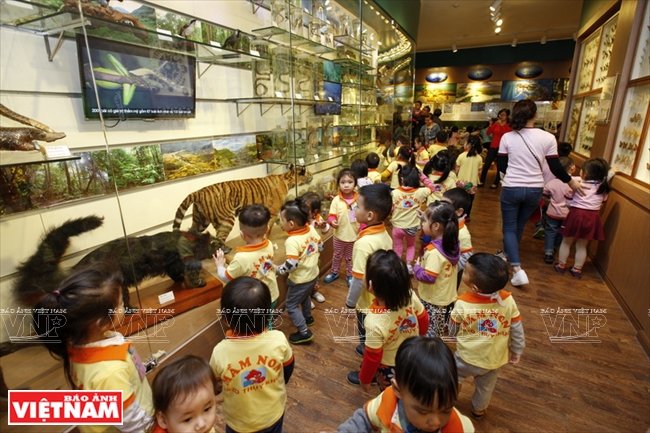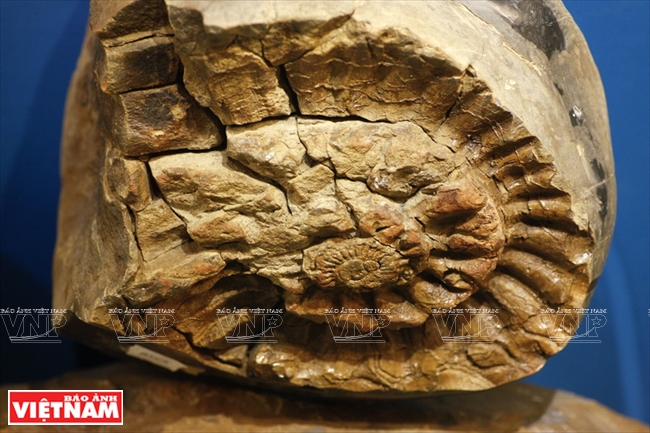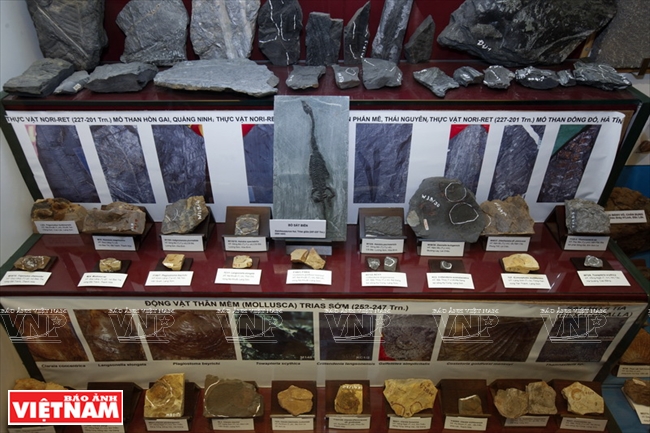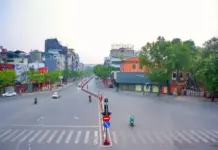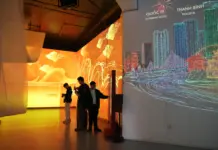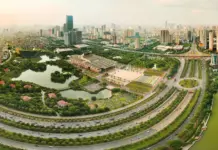At the entrance to the museum stands a specimen of a dinosaur and eye-catching posters which leave strong impressions on viewers. Inside the museum, exhibits are showcased scientifically with different themes and detailed information boards. There are short videos that are broadcast for those who want to learn more about objects.
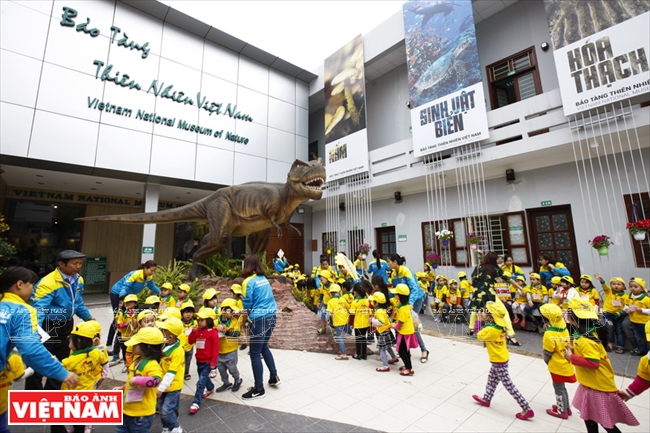 Vietnam National Museum of Nature attracts a large number of tourists, including students from many schools. |
The most intriguing area in the museum is the room introducing “the history of the evolution of the earth” with a diversity of creatures. Here, there are a wide range of objects, specimens, fossils, plants, insects and animals.
The museum has 40,000 exhibits, including over 400 mammals, 4,000 reptiles and amphibians, 400 fish, 300 snails, over 2,000 samples of geology and paleontology, 2,000 insects and over 10,000 plants. Some samples are rare and only found in Vietnam.
The museum is a frequent study site for students because it provides them with a fantastic experience with a special gallery of nature and useful lessons about Vietnam. Here, they can see samples that make lessons vivid and easy to remember. Furthermore, they also enrich the student’s knowledge of nature and raise their awareness of protecting nature and the environment. According to cadres in the museum, many schools have registered for their students to visit.
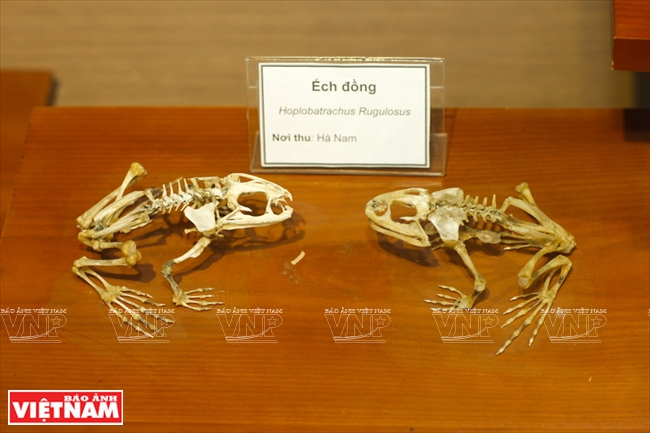 Specimens of frogs collected in Ha Nam Province are displayed at the museum. 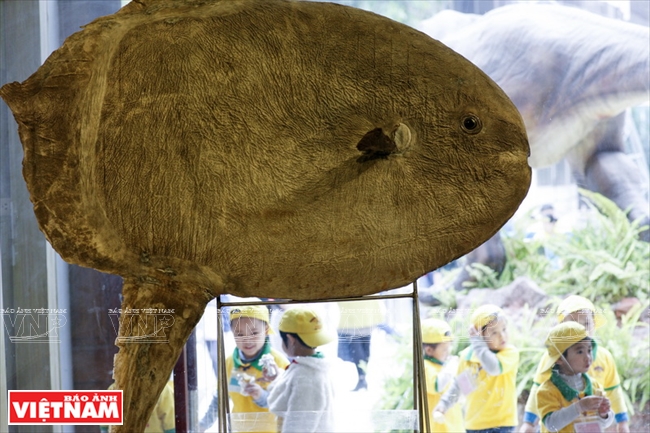 Ocean sunfish – one of the unique specimens of sea creatures on display at the museum. 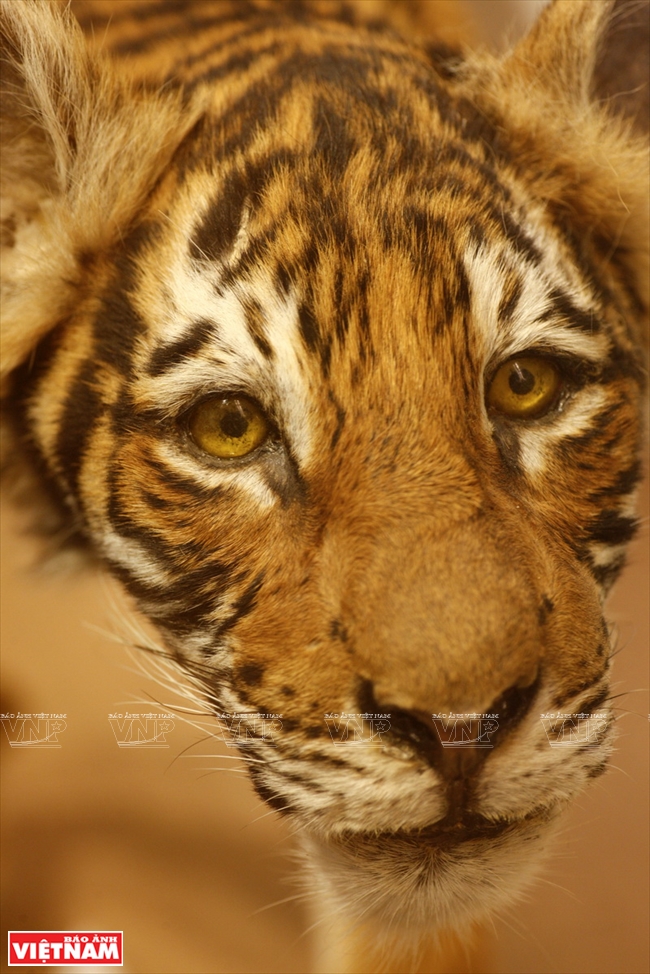 Specimen of Indochinese tiger displayed at the museum. 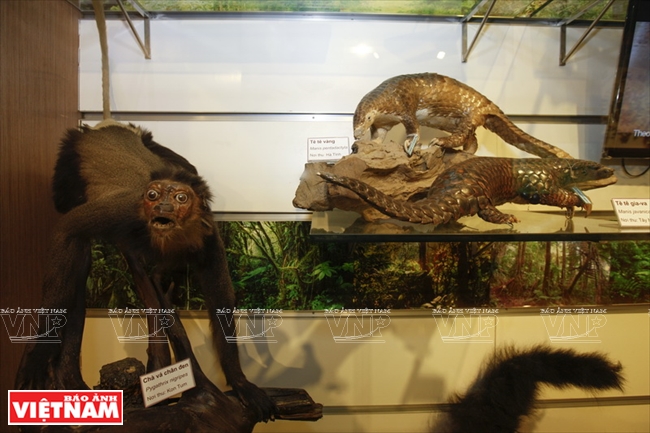 Some specimens of animals in Vietnam. 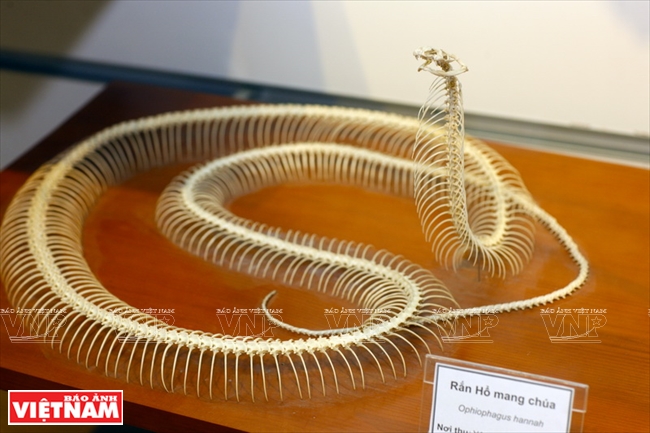 A specimen of the King Cobra at the museum. |
Regardless of the difficulties in collecting samples, especially rare samples of animals which are almost extinct, the museum’s cadres have continually strived to look for samples from different sources to diversify the collection, meeting the demands of visitors. With great effort, the museum now attracts an incredible number of tourists.

